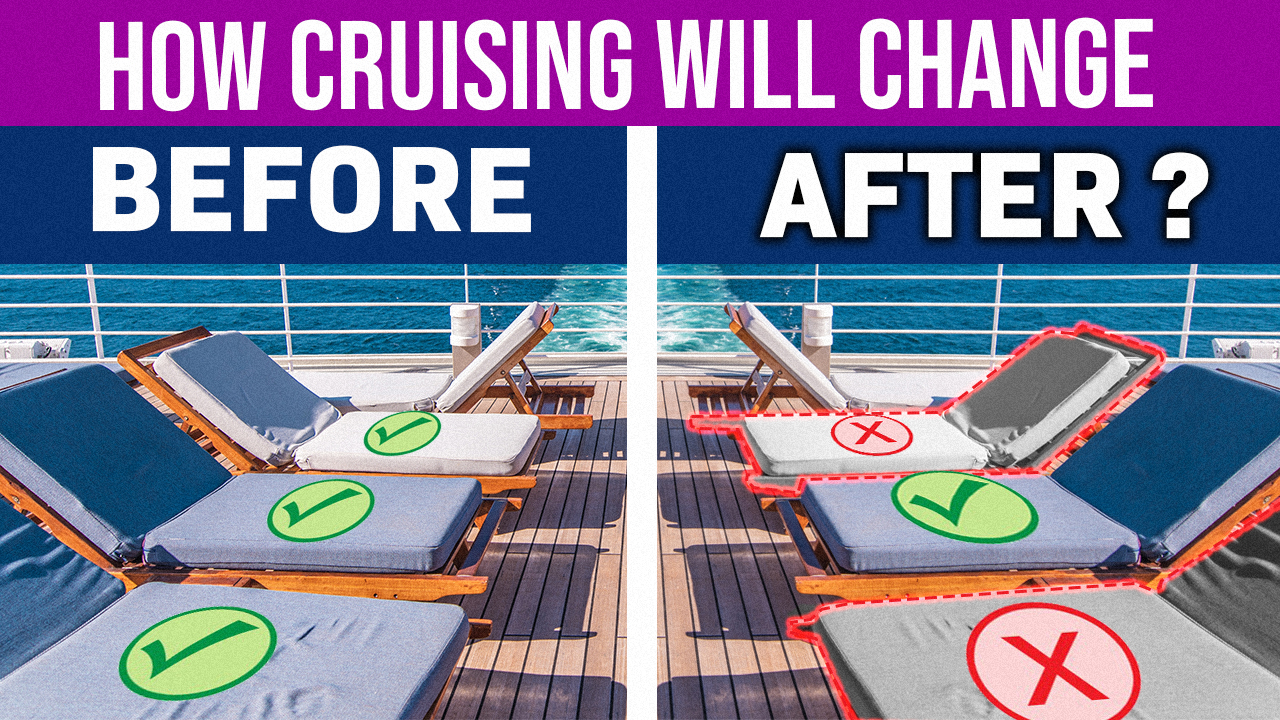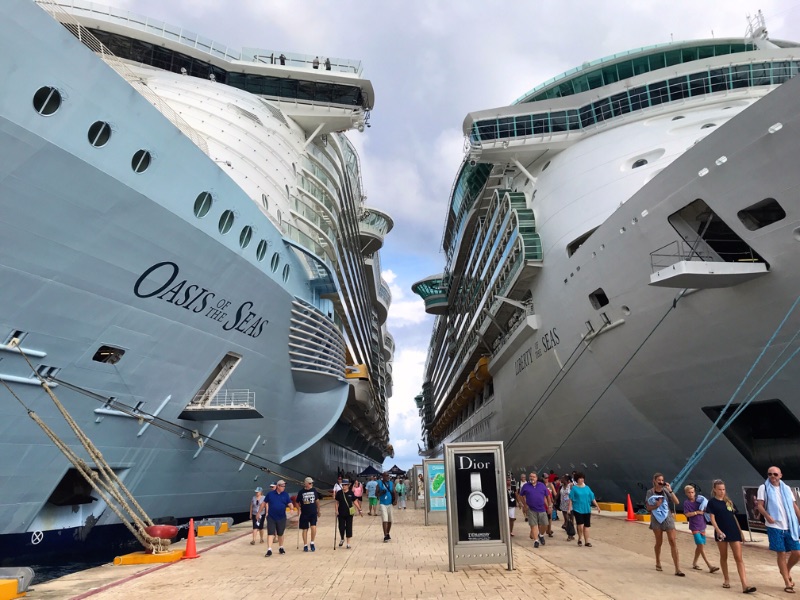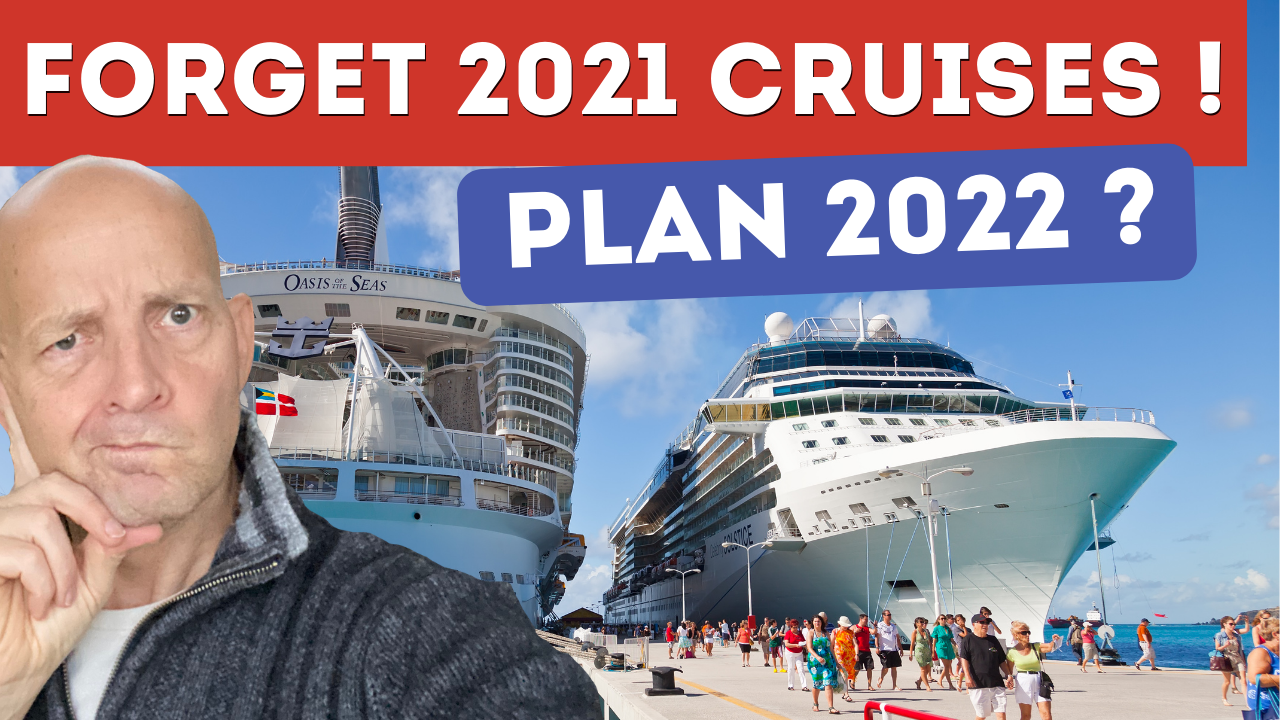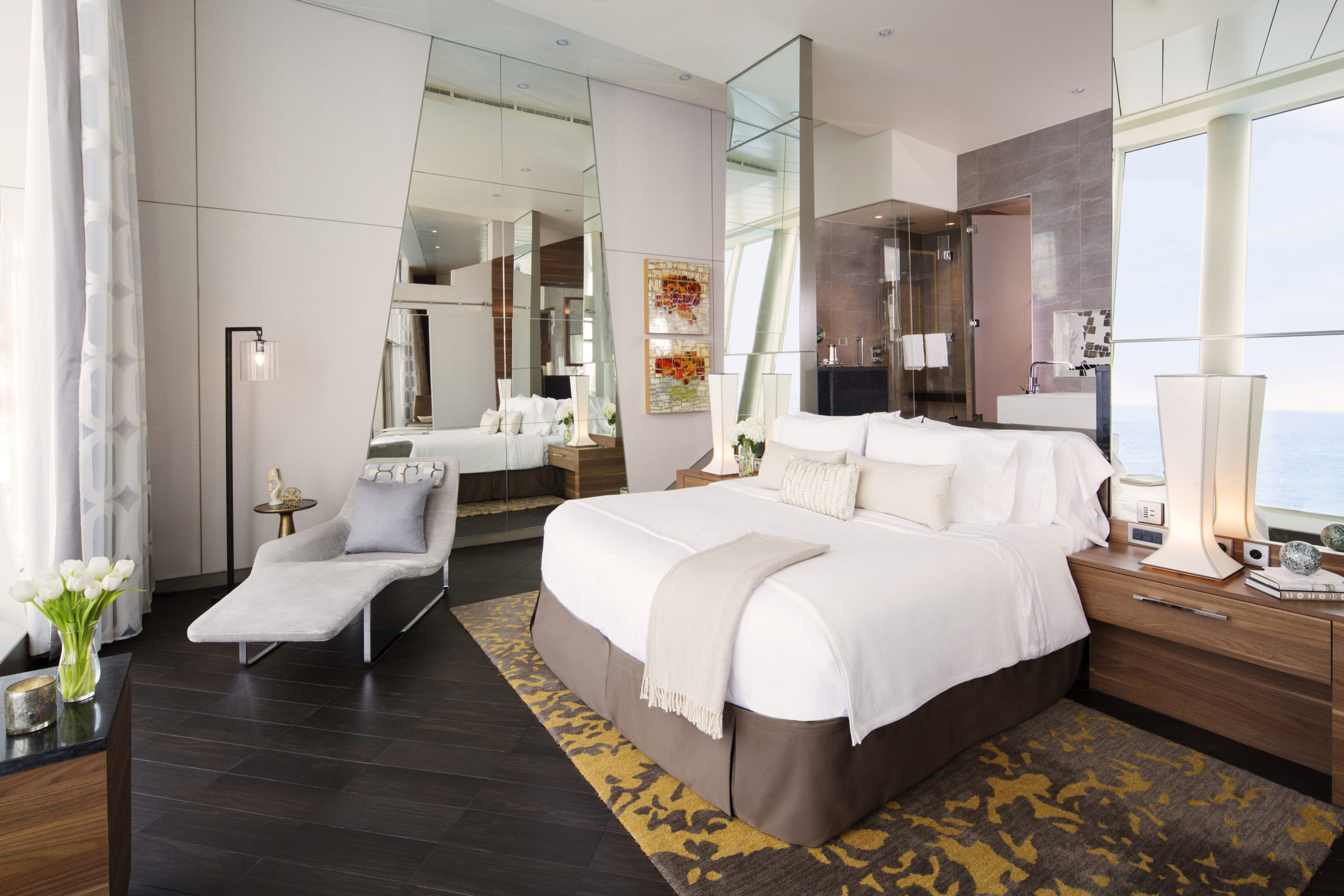7 Ways Cruising Will Change After The Shutdown
The seven ways cruising will change after the shutdown. These are my projections and thoughts.
I want to share with you the seven things I think are going to happen to cruising moving forwards as a result of the shutdown, and how people are going to travel after the pandemic. Also, what I think is going to be essential to put in place to make cruising vacations safe and again.
1 Fewer passengers
One of the biggest changes that’s happened to the way that we behave and the way we think about life through this whole process is that term ‘social distancing’. The idea of being crammed together close to people has become something quite dangerous.
I think moving forwards, people are going to want more personal space, and one of the consequences of that is we’re going to see that cruise lines have fewer people on their ships. I think there are a couple of signs that that’s already starting to happen.
One of the big trends in cruising has been towards bigger and bigger ships, or to cram more and more people onto the ships because the economic model was get people on the ship, then get them to spend a lot of money once they’re on board on drinks, excursions, WI-FI, speciality dining, etc.
However, I think people are going to want more space, and as we saw in this whole build-up with some of the outbreaks that happened on cruise ships, being in close quarters was a big issue. I think we’re going to see cruise lines cruising with fewer people on board and in new ships, more and more space allocated per passenger.
I was on a cruise just as the shutdown happened, and because people were nervous of travelling, there were definitely fewer people on the ship. You had much more of a sense of space, things weren’t as crammed and busy, and you could actually create more space when you ate, when you went to the theatre, and when you went out on excursions, and I think that’s going to become the norm.
Online, I’ve noticed that some cruise lines are actually taking some top selling cruises off sale, and I think there have been lots of indications that cruise lines will have fewer people on board. Of course, there are consequences for that, and over the longer term, we may see fares go up because of course they need to balance some of those economics. I don’t think that’s going to happen in the short term – I think fares will stay low for a while as they try and attract people back into cruising.
In the medium term, we will see fewer people or more space on average per passenger, either because cruise lines won’t fill ships to 100% or over time we will see some adjustments to the way ships are built.
2 Venue numbers
The second thing I think we’re going to see is linked very much to that, and there are some very strong indications that cruise lines won’t be cramming venues completely full.
One of the most interesting documents that came out just as I was researching this article is from Genting Cruise Lines – a really big cruise operator who own Crystal Cruises, as well as Star Cruises and Dream Cruises in Asia. They put out a strategy for how they’re planning to move things forwards as cruising starts, and what they’re talking about is dramatically reducing the amount of people they let into venues.
For example, they’re talking about probably only filling the theatre to half capacity moving forwards, to give more people the opportunity to space out. The implications of this could be that there are fewer shows in the theatre which will repeat more often, and maybe over time, theatres will be redesigned. I think it’s going to be really interesting to see how they actually limit the amount of people that go into venues so that people have more space. I do think it’s going to become more of a social norm, the expectation of space.
3 Regions and homeports
The third thing I think we’re going to see, certainly in the first year or so of cruising is that ships are going to be very much more focused on staying close to home.
Over the last couple of years, we’ve seen a real drive to find new itineraries and new places to cruise. The cruise lines were pushing their ships all around the world. In the run up to the shutdown that became a real challenge, because ships were far away from their home ports, where they had clout because their head offices were there. And increasingly as things developed, we saw that international ports were not willing to let cruise ships come in, particularly those that weren’t big cruising centres and not used to having a lot of cruise ships.
I think the cruise lines will become more focused on staying close to home. That’s going to mean people focusing very heavily on the Caribbean, and Mediterranean, and probably I guess Alaska too. All really close to where their head offices are, and where they have lots of influence. We’re likely to see the development of more and more home ports in those areas, and cruise lines building strong relationships with the ports. What we saw with those ships that were far from home is that they had to sail back to Florida, either to Miami or to Fort Lauderdale, because that was the only place they could find willing to let them in.
This is because cruising is such an integral and fundamental part of the whole ecosystem in the state. I think what we’ll see over the next year or two is cruise lines retreating much more into where they have influence, and probably building up more of a standard process if there are outbreaks: how does the ship come in, how can they get passengers off quickly, etc, because historically if there’s an outbreak on a ship, cruise lines have disembarked those passengers, but through this whole outbreak, passengers were being kept on board.
So, I think another reason for sticking close to home ports, is to build up infrastructure and relationships.
4 Destinations
The fourth thing I think will happen is another very interesting one. As ports closed and they had fewer cruise passengers, there was a realisation that some of the popular destinations are very overrun.
There was already a lot of discussion around over-tourism and the fact that cruise ships were coming to places like Venice and Santorini and there were just too many people. As the waves of cruise ships aren’t currently arriving, a lot of these destinations are going to rethink their whole approach to tourism. This is partly because they may be concerned about cruise ships coming in and bringing in disease, but also bringing in those waves and waves of people.
So, I think we’re going to see more and more ports using the pandemic as an opportunity to close to cruise ships because they don’t want over-tourism in their port. I think we’re going to see a real reduction in the number of places that cruises go to, partly because they want to stay closer to home, but also because ports are going to be less interested in having mass tourism.
5 Medical screening
Without a shadow of a doubt, the way that we embark ships, whether that’s for crew or passengers, is going to change. Out will go the self-declaration questionnaire before you board, where you basically say if you have had vomiting and diarrhoea, or if you’ve visited certain places that might have had some issues. There’s no incentive for people not to lie on that form because they’d be worried they would either be denied boarding or they would be restricted to their cabin.
We’re going to see a much more invasive (if that’s the right word) way of embarking. Passengers and crew are going to be screened before they get onto the ship. Certainly in the build up to the shutdown, temperature checks were being taken, however temperature is a relatively blunt instrument because people with the virus only have a temperature five or more days after they’ve been infected. So they are still infectious and still can spread it before the symptoms show up.
So actually temperature checks alone is probably not going to be enough.
You may have to bring medical certificates showing you’ve been vaccinated, or there may be actual testing before you board. This means the whole embarkation process is going to become much longer. You may also find disembarkation becoming much more complex, with screening in the port before you actually disembark.
Although it’s still a short-term measure, Hong Kong airport recently introduced a process where everyone arriving on an international flight has to go and be tested, and they’re then sent to wait for the results of the test. Dependent on the results of the test, they might have to go into quarantine, or even have to go to a specific medical centre. So already we are starting to see some indications that there is going to be a much more complex screening process and probably more invasive checking before you can board a cruise ship.
6 Seniors
The other thing that’s going to change is the way that seniors, or more elderly people – certainly 70 plus – go cruising.
That’s going to be a massive challenge for some cruise lines where many of their passengers are seniors and older people. In the run up to the shutdown, there was strong advice not to go cruising, and all the cruise lines introduced the requirement for some sort of certification from your doctor saying that it was okay for you to go travelling. I think this sort of requirement for more elderly people is going to become a big issue. At the moment it’s 70 plus, but that could well reduce down.
I’m in my early 60s and I won’t be surprised if there’ll be even more restrictions as I start to board. For cruise lines, this becomes a massive challenge. They’re going to have to find a way of finding new audiences or finding a way of helping the people in that age group to cruise in a safe way.
7 Onboard changes
Finally, I think there are going to be some fundamentally big changes in the design of cruise ships, but particularly the onboard services. I think we will see medical centres becoming much larger and more complex, building in isolation spaces and shifting a little bit more to be able to deal with bigger medical issues on board. I think there’ll be more medical staff on board, and they will have to have much more capability.
The second thing I think we’re going to see is the disappearance of self-service buffet areas. You see this a lot if there’s a Norovirus issue on board, and certainly what I saw when I was on the ship in the run up to the shutdown was that everything was served by staff wearing gloves and masks, and you literally could not touch anything. Salt and pepper pots were removed and anything which would have been touched by multiple people, even self-service coffee and tea was then taken over and served to you in the buffet. I think buffets and the way that they work will fundamentally change, and they will become served in more formal dining venues.
The third area that I think is going to see a lot of challenge and change is the whole area of air conditioning. There’s a lot of discussion around what role air conditioning and the way air conditioning systems work, may or may not have spread this airborne virus. I’m not sure there’s any specific data on that, but one thing I’ve noticed is more and more talk by cruise lines about changing the air conditioning systems. So, for example, referring back to Genting, they’ve said that moving forward all their ships will change their conditioning systems to only bring in fresh air from the outside. There will be no recycled air. Of course, that’s going to be a huge challenge on land as well for ventilation and air conditioning systems. But I think that the whole issue of how air is moved around will become something that gets changed.
The fourth area of course is the way things are cleaned on board. Anyone who’s been on a ship during a Norovirus outbreak, or certainly as I saw in the run up to the shutdown, will have noticed the way that the whole cleaning process is changed, with high levels of cleaning. Anything that is touched multiple times, like railings, stairwells, lift buttons and door handles were being wiped down every hour or two hours. Rooms were being deep cleaned and there was much more enforcement of hand washing – not just hand sanitiser gel, but actual hand washing. We’re probably going to see more hand washing stations appearing on ships.
There are going to be many, many changes coming to the structure of cruising and the way that we cruise, and these are the seven things that I think are fundamentally going to change the way that we cruise moving forwards.
I have many more videos of cruising advice, tips, and thoughts about the future of cruising, so why don’t you watch one of those, right now?





















Great article Gary! I follow you online, but first time poster. I’m a long time cruiser and I think these 7 are only the tip of the iceberg for sure! I do wonder about your points in #4. With all the press these past couple years on over tourism, I wonder if dropping ports in less over toured locations will start to have an economic import on those port cities. It’ll be such a catch-22, saving some ports from over tourism, but possible economic issues for others.